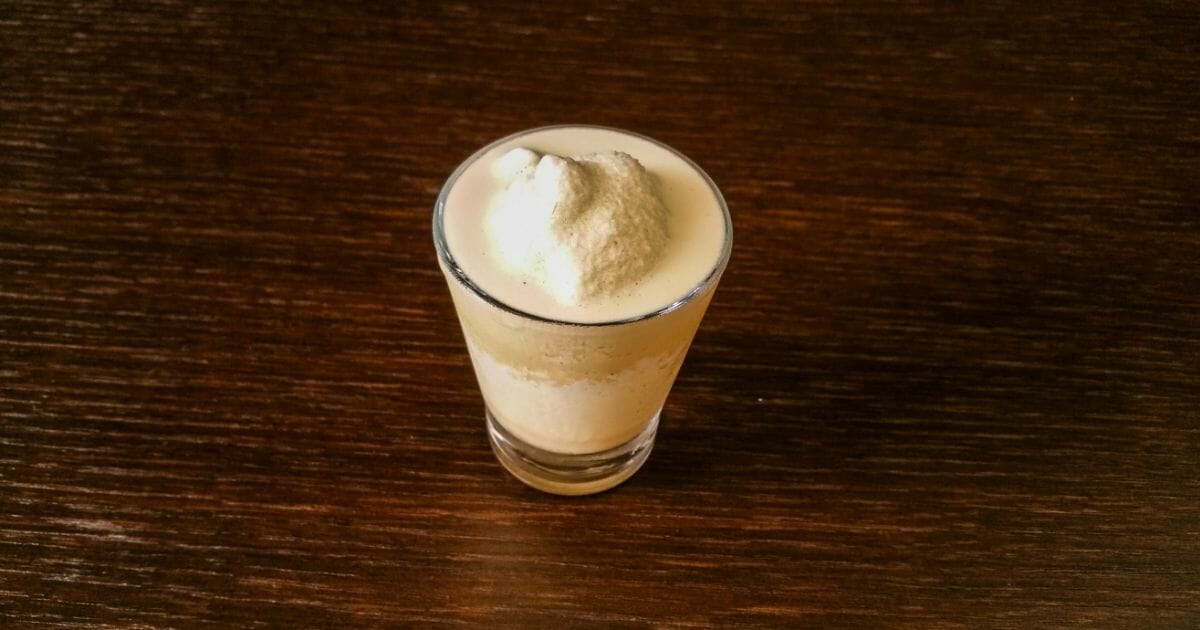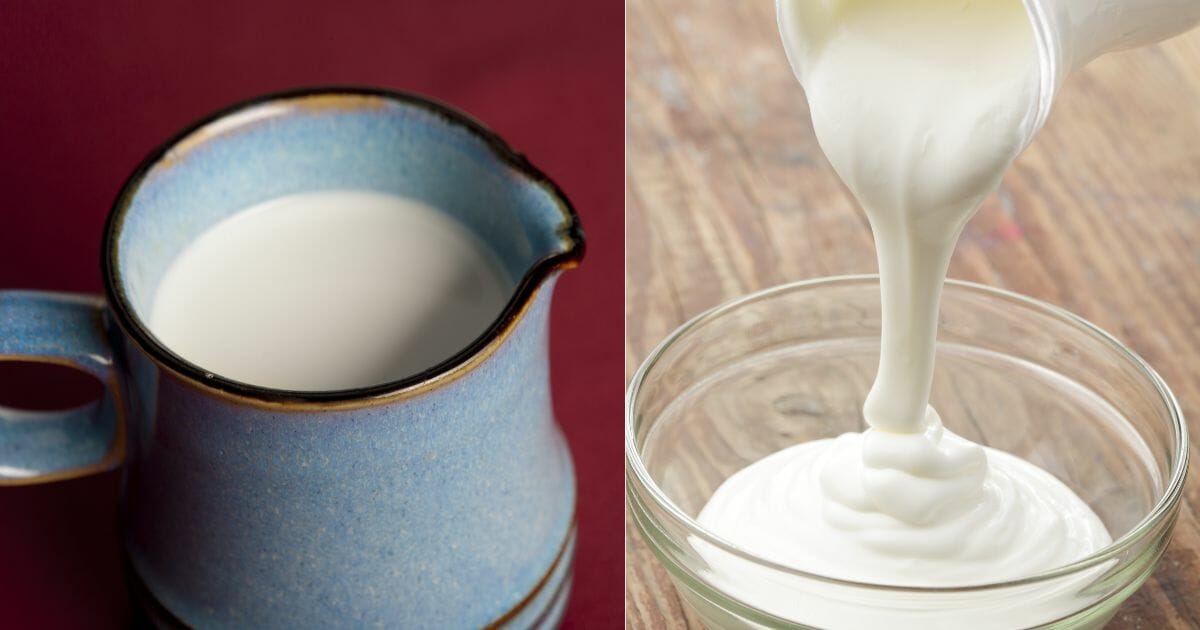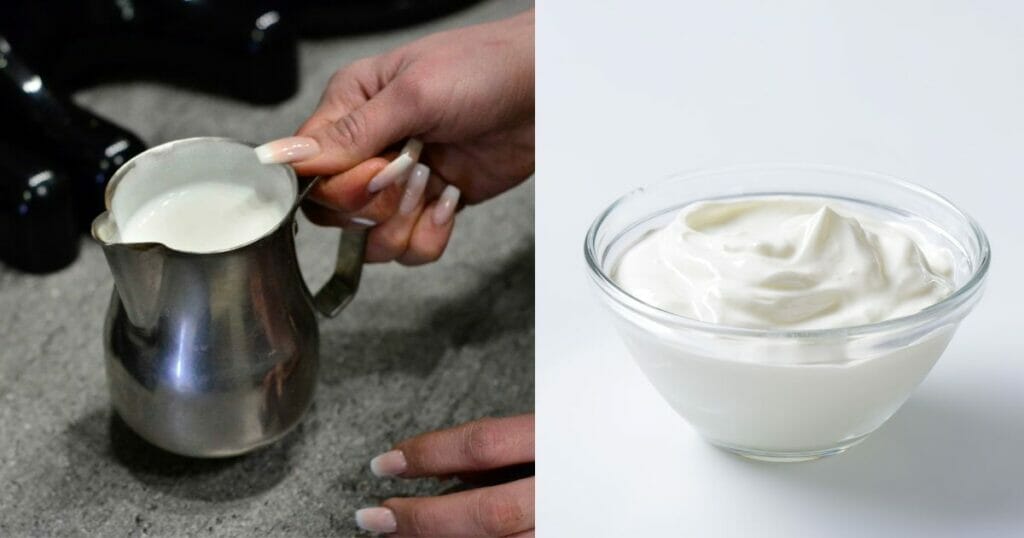Are you ready to put on your chef's hat and flex your foodie muscles? Determining what goes in a dish can be a hard decision, especially when it comes to dairy products! One of the most common pairings in the kitchen is between table cream and sour cream. But what exactly sets these two creamy ingredients apart, and which one should you choose?
We'll give you a breakdown of table cream vs sour cream, so you can fully understand their distinctions and make an educated choice on the one that suits your requirements the most.
What Is Table Cream, and What Are Its Uses?

Table cream, also known as light cream or coffee cream, is a dairy product with a fat level that falls somewhere between milk and heavy cream. It typically contains around 18% to 30% milkfat, making it richer than milk but lighter than heavy cream.
This moderate fat content gives table cream versatility when used in various culinary applications:
- Cooking and Baking: Its moderate fat content reduces the likelihood of curdling when heated, making it ideal for simmering and thickening without separation. Table cream offers moisture and a creamy texture to cakes, quiches, and custards when used in baking recipes.
- Coffee and Beverages: Table cream is commonly used to enrich the flavor and texture of coffee and other hot beverages. Its creaminess makes the coffee smoother and more pleasurable by counteracting the harshness.
- Desserts: Table cream can be whipped into a lighter texture than heavy cream, creating a delicate topping for pies, puddings, and fruit salads. Its relatively lower fat content makes it a suitable alternative for those seeking a slightly healthier option to top their desserts.
- Savory Creations: Table cream is essential for creating creamy pasta sauces, stews, and curries. It is especially effective in cuisine that relies on complex flavors and textures since it may combine ingredients and give a velvety finish.
What Is Sour Cream, and What Are Its Uses?
Sour cream, a dairy product known for its tangy flavor and creamy consistency, is made by fermenting regular cream with lactic acid bacteria. Its distinct sour flavor and thick texture are the result of this technique.
Sour cream has a wide range of culinary applications:
- Dips and Condiments: Sour cream can be blended with other seasonings, including herbs, spices, and other ingredients, to make a variety of delicious dips for veggies, chips, and even as a topping for baked potatoes.
- Baking: Sour cream can be a secret weapon in baking, providing moisture and tenderness to a variety of baked goods. Because of its acidity, baking soda and other leaveners can work together to make cakes, muffins, and quick breads rise. It also adds a slight acidity that counteracts the sweetness of desserts like cheesecakes, cupcakes, and coffee cakes.
- Creamy Sauces: A variety of sauces benefit from the acidic flavor and creamy texture of sour cream. It gives gravies, salad dressings, and pasta sauces richness and depth of taste.
- Topping and Garnish: Sour cream is often used as a topping to introduce a creamy and tangy element to various dishes. It is a typical Mexican ingredient that enhances dishes like tacos, nachos, and enchiladas.
Table Cream vs Sour Cream Differences

In terms of flavor, texture, composition, and culinary applications, table cream vs sour cream are two distinct dairy products that share some characteristics but also differ noticeably from one another. Let's look at the key distinctions between these luscious ingredients.
Structure
Table Cream: Typically containing a milkfat content of 18% to 30%, table cream falls between milk and heavy cream in richness. Its reasonable fat content makes it useful for both baking and cooking since it adds creaminess without dominating food.Sour Cream: Made by fermenting regular cream with lactic acid bacteria, sour cream has a tangy flavor. It generally has a similar milkfat content as table cream but has a distinct flavor due to the fermentation process.
Flavor Profile
Table Cream: Table cream has a neutral and creamy flavor, complementing both sweet and savory dishes. It lacks the tanginess of sour cream since it's not fermented.
Sour Cream: Sour cream tastes tart and slightly acidic, as the name would imply. This distinctive flavor can improve some foods by bringing depth and contrast.
Culinary Uses
Table Cream: To improve the flavor of soups, sauces, and baked goods, table cream is a versatile culinary ingredient. With its moderate fat content, it can simmer and thicken without curdling, providing a creamy texture to dishes without altering their flavor significantly.
Sour Cream: Often used as a topping, base for dips, or flavor enhancer, sour cream's tangy taste makes it stand out. It is delicious in both savory and sweet cuisines, such as baked goods, Mexican food, and dips.
Baking and Cooking
Table Cream: Table cream is a dependable ingredient for cooking and baking due to its durability at higher temperatures. Recipes and sauces that call for a creamy texture typically incorporate it.Sour Cream: Adding moisture and suppleness to cakes, muffins, and other baked goods is possible using sour cream. However, in some recipes, its acidity may interfere with the leavening process.
Cultural Variations
Table Cream: The term "table cream" is commonly used in English-speaking countries.Sour Cream: Sour cream has its origins in Eastern European cuisine and is frequently used in dishes from that region. It's also a common ingredient in Mexican and Tex-Mex cuisines.
Bottom Line
Table cream and sour cream are both rich and creamy dairy products, but they have different culinary purposes. While sour cream offers a distinctive flavor due to its acidity, table cream's neutral smoothness pairs well with a range of foods.
Depending on your recipe and personal preferences, you can select between table cream vs sour cream to elevate your culinary creations.
About the Author
Tamara J. Sims
EXECUTE CHEF
As a seasoned kitchen and food writer, Tamara has a remarkable ability to weave words together, transporting readers to the heart of the culinary world. Tamara’s articles are written with an engaging blend of insightful commentary, honesty, and real-world examples based on personal experiences. She has the ability to captivate seasoned food enthusiasts and novice cooks alike.
SeaRanchLodge.com is a participant in the Amazon Associate program and will earn from qualifying purchases.


